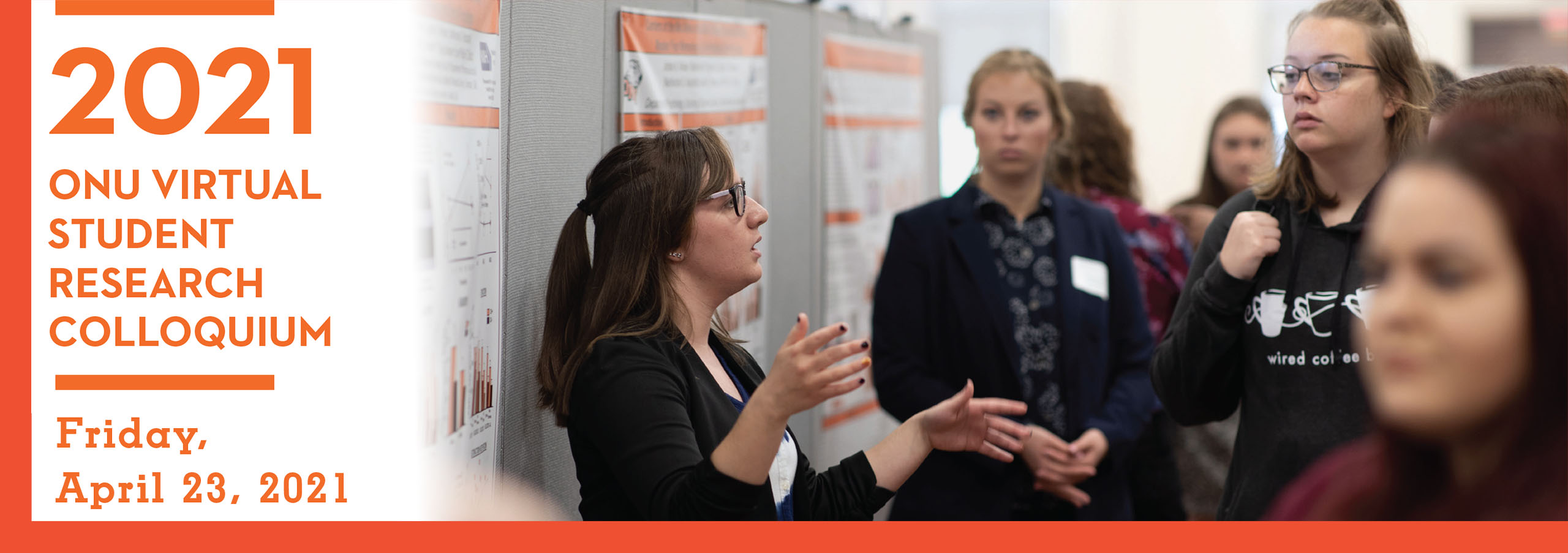Sponsor
Kristie Payment, PhD
Ohio Northern University
Psychology, Health & Behavioral Sciences
k-payment@onu.edu
Advisor(s)
Kristie Payment, PhD
Ohio Northern University
Psychology, Health & Behavioral Sciences
k-payment@onu.edu
Document Type
Video
Start Date
23-4-2021 9:00 AM
Abstract
The COVID-19 pandemic has greatly affected the daily lives of many people. The novelty of mask wearing during this pandemic means that little is known about the effects of mask wearing on ability to identify emotion through facial expression. Similarly, effects of exposure time on masked facial expression identification are under-researched. Participants were shown 40 total images of masked and unmasked faces at 1 and 5 second intervals; they were then asked to identify the emotion being displayed through a seven-option forced response question. The emotions depicted were happy, sad, angry, disgusted, and neutral. Two additional emotions that were not pictured (surprised and afraid) were added as potential multiple-choice responses. Researchers found that participants were significantly better able to identify emotions on unmasked faces than emotions on masked faces (p = .001). Researchers also found that participants were significantly more successful at identifying emotions on faces they were exposed to at 1 second intervals than faces exposed to them at 5 second intervals (p < .001). Researchers suggest that these findings have implications on college-aged individuals’ ability to connect socially during the COVID-19 pandemic. Future research on the effects of mask wearing on identification of specific emotions, emotional intensity, and social connectedness is suggested.
Recommended Citation
Boaz, Kayla; Miller, Kendra; Spargo, Aleksandria; and Waldrop, Camryn, "Emotions behind the mask: Do facial coverings impair the ability to detect facial expression?" (2021). ONU Student Research Colloquium. 3.
https://digitalcommons.onu.edu/student_research_colloquium/2021/papers/3
Open Access
Available to all.
Emotions behind the mask: Do facial coverings impair the ability to detect facial expression?
The COVID-19 pandemic has greatly affected the daily lives of many people. The novelty of mask wearing during this pandemic means that little is known about the effects of mask wearing on ability to identify emotion through facial expression. Similarly, effects of exposure time on masked facial expression identification are under-researched. Participants were shown 40 total images of masked and unmasked faces at 1 and 5 second intervals; they were then asked to identify the emotion being displayed through a seven-option forced response question. The emotions depicted were happy, sad, angry, disgusted, and neutral. Two additional emotions that were not pictured (surprised and afraid) were added as potential multiple-choice responses. Researchers found that participants were significantly better able to identify emotions on unmasked faces than emotions on masked faces (p = .001). Researchers also found that participants were significantly more successful at identifying emotions on faces they were exposed to at 1 second intervals than faces exposed to them at 5 second intervals (p < .001). Researchers suggest that these findings have implications on college-aged individuals’ ability to connect socially during the COVID-19 pandemic. Future research on the effects of mask wearing on identification of specific emotions, emotional intensity, and social connectedness is suggested.

